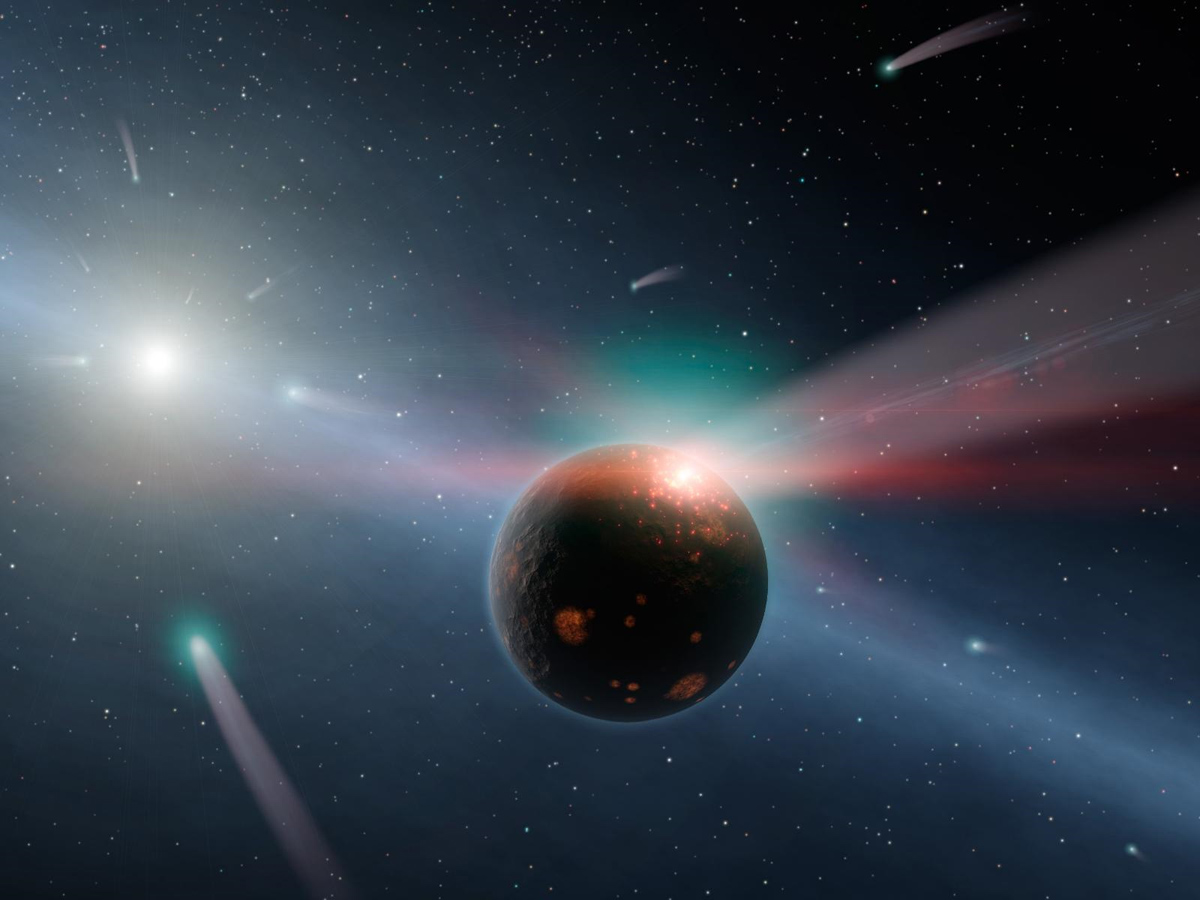'Exocomets' Common Across Milky Way Galaxy

Comets may be as common as alien planets in star systems throughout the Milky Way galaxy, scientists say.
Astronomers have spotted likely comets around six faraway stars, bringing the total number of systems now thought to host the so-called "exocomets" to 10. It's likely that all 10 of these systems also harbor alien planets, suggesting that comets and exoplanets are often found together, as they are in our own solar system, the new study found.
The number of exocomet-hosting systems could thus number in the billions across the Milky Way, as astronomers think our galaxy harbors at least 100 billion alien planets.
"This is sort of the missing link in current planetary formation studies," lead author Barry Welsh, of the University of California, Berkeley, said in a statement. [A Sky Full of Alien Planets: Infographic]
"We see dust disks — presumably the primordial planet-forming material — around a whole load of stars, and we see planets, but we don't see much of the stuff in between: the asteroid-like planetesimals and the comets," Welsh added. "Now, I think we have nailed it. These exocomets are more common and easier to detect than people previously thought."
Welsh presented the findings today (Jan. 7) duing a meeting of the American Astronomical Society in Long Beach, Calif.
Get the Space.com Newsletter
Breaking space news, the latest updates on rocket launches, skywatching events and more!
The researchers discovered the six new exocomet systems using the 2.1-meter telescope of the McDonald Observatory in Texas.
The telescope picked up faint absorption lines that varied from night to night. The astronomers determined these features were caused by large clouds of gas emanating from comets as they drew close to their host stars and heated up.
In our own solar system, comets usually stay far from the sun, only venturing close after a gravitational disturbance sends them veering off on a new course. It's likely that alien planets caused the newly discovered exocomets to plunge toward their stars, Welsh said.
The newfound exocomets all orbit very young and bright stars that are about 5 million years old, because the team's detection technique works best with such stars. But higher-resolution instruments may reveal comets around older, more sun-like stars — the type around which most exoplanets have been found to date, researchers said.
The first exocomet system was discovered in 1987, and three more were spotted over the years.
"But then, people just lost interest. They decided that exocomets were a done deal, and everybody switched to the more exciting thing, exoplanets," Welsh said. "But I came back to it last year and thought, 'Four exocomets is not all that many compared to the couple of thousand exoplanets known — perhaps I can improve on that.'"
Follow SPACE.com on Twitter @Spacedotcom. We're also on Facebook & Google+.
Join our Space Forums to keep talking space on the latest missions, night sky and more! And if you have a news tip, correction or comment, let us know at: community@space.com.

Space.com is the premier source of space exploration, innovation and astronomy news, chronicling (and celebrating) humanity's ongoing expansion across the final frontier. Originally founded in 1999, Space.com is, and always has been, the passion of writers and editors who are space fans and also trained journalists. Our current news team consists of Editor-in-Chief Tariq Malik; Editor Hanneke Weitering, Senior Space Writer Mike Wall; Senior Writer Meghan Bartels; Senior Writer Chelsea Gohd, Senior Writer Tereza Pultarova and Staff Writer Alexander Cox, focusing on e-commerce. Senior Producer Steve Spaleta oversees our space videos, with Diana Whitcroft as our Social Media Editor.